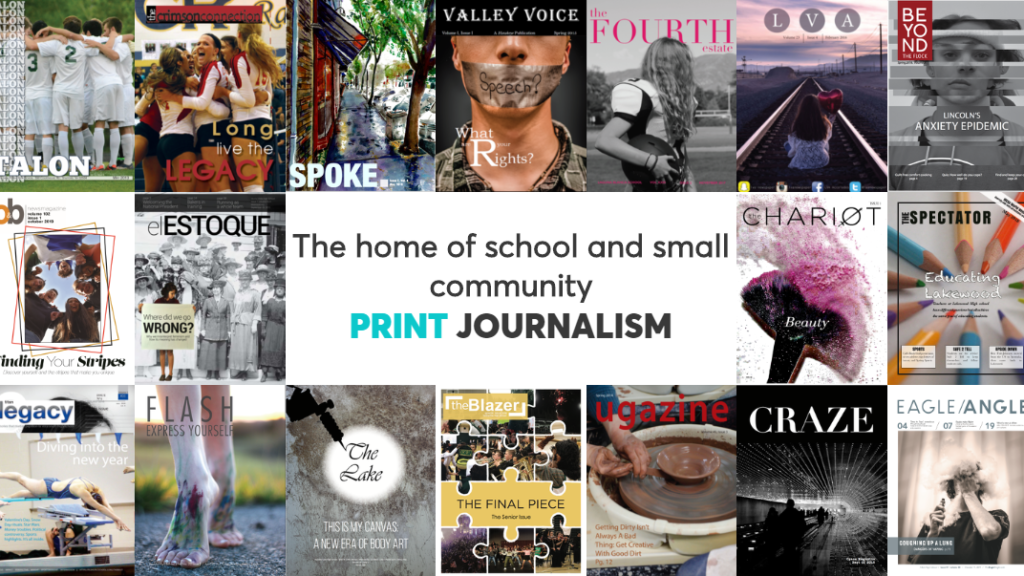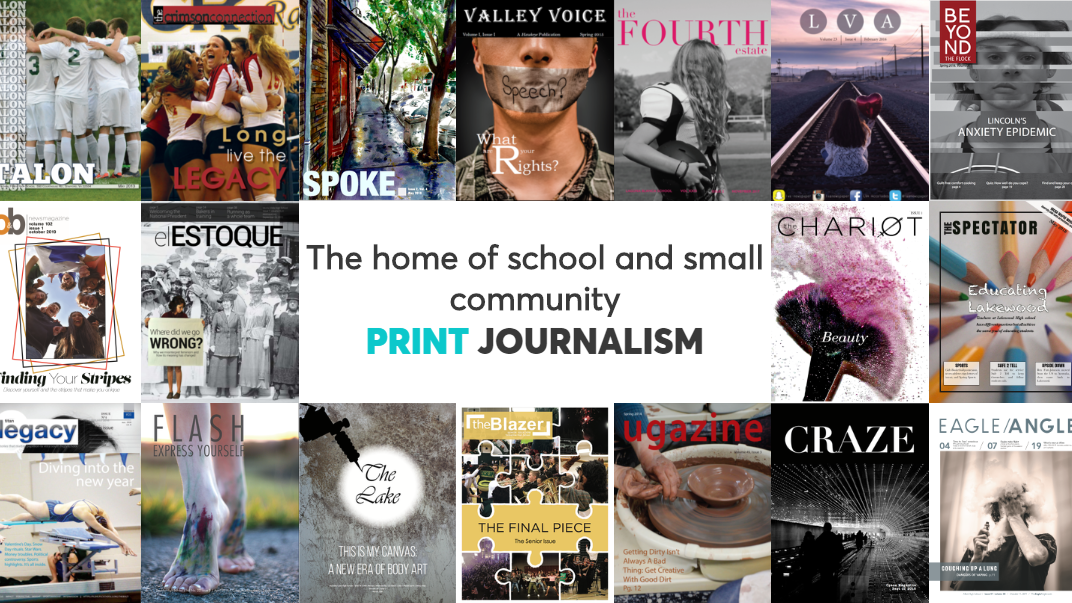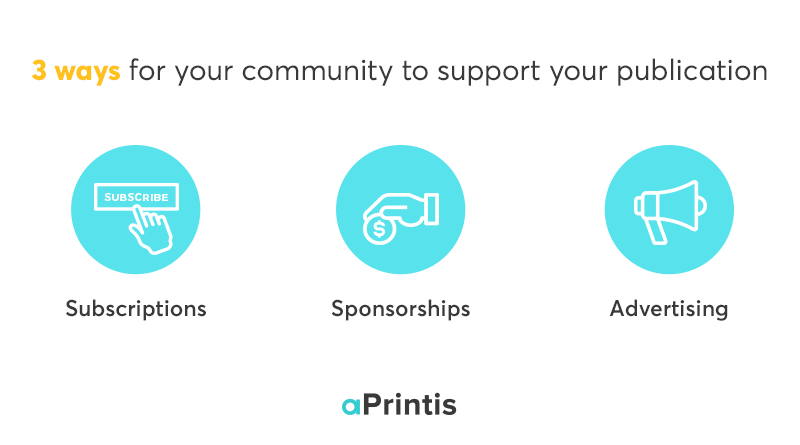The case for a magazine for every K-12 school

The school newspaper has been an institution at high schools for the journalism and reporting function that it serves. Even more important, the variety of skills that students gain from the experience of creating it has few substitutes. That’s why, a large number of schools continue to run a printed newspaper program in today’s online/mobile world.
The experience of creating school magazines is arguably even richer when compared with that of newspapers. This is because magazines provide greater opportunities to showcase design creativity and content depth. And, readership and satisfaction with the final product is seemingly higher with magazines. At aPrintis, we have had a front row seat to observing this through our work, helping schools all over the country publish magazines.
Let’s explore what’s so special about students creating a magazine for their school. We think this article would be of interest not just to students, teachers and school administrators but also to parents of K-12 students.
Long-form Writing and Reading
Many believe that over the last two decades, there’s been a general decline in the amount of time that K-12 students devote to long-form reading and writing. School magazine publications provide students with an outlet to delve into composing longer-form articles as well as to read thoughtful pieces written by their peers. The relevance of the content and visual appeal of the product makes it an automatic for them. Some schools even recognize this by dedicating a common reading time for the entire school when the school magazine is distributed. Check out some school magazine samples at https://aprintis.com. See how varied and compelling the content is.
Critical skills students learn from the experience
Aside from the long form writing and reading skills that benefit the entire school, students on the magazine editorial staff develop numerous critical real world skills. Here are just a few:
Journalism/Research: Magazine article authoring gives students the license to conceptualize, research, structure and write insightful articles. This is often complemented with subject matter expert interviews. All – invaluable training to become an authority on a subject and own one’s writing.
Design/Creativity/Photography/Technology: A unique aspect of magazine publishing is that authors get to own an entire page or more. They learn to use graphic design elements such as color, fonts, images, content structuring, impactful headlines etc. to make the page visually standout. All the while staying consistent with the overall theme of the magazine. Moreover, developing expertise in a comprehensive graphics toolset such as Adobe Creative Cloud (Adobe InDesign, Illustrator, Photoshop & much more) is a skill that travels well beyond visual design creativity. It prepares students to become comfortable with exacting software and start to place a premium on performance they expect from technology.
Leadership/Teamwork/Project Based Learning: The school magazine is the product of a team of contributors collaborating together. Writers, editors, photographers, graphic designers and ad/subscriptions sales team – all pitch in. The operation is managed by the journalism adviser or a student managing editor to keep the production on point as far as content, design and schedule. It involves a lot of facilitation, coordination, exhortation, work scheduling and tracking, dependency allocation, resource management and contingency planning. Journalism students are fortunate to be able to get this kind of pro-level training early in their student lives. Editors get great leadership experience through the opportunities to delegate responsibilities within the team as well as by driving consensus on design decisions and schedule
Entrepreneurship/Branding/Promotion: For many students the school magazine is the first publicly visible product that they would have created in their lives. Students on the magazine staff get to learn first hand product design, launch, marketing and promotion, distribution, monetization, fund raising, advertising. All – key parts of running any business and rich building blocks for an entrepreneurial mind.
Other than the educational aspect of the school magazine for the students, it is often overlooked that the school magazine becomes a very tangible showcase for the school itself.
Why is the School Magazine a great showcase for the school
Yearbooks only come out at the end of the year. Newspapers are more about event reporting and just not visually appealing enough for most to engage with. The school magazine is one of the quickest way for someone outside the immediate school community to tap into the all-round academic and extra-curricular prowess of the students and what’s foremost on their minds. It is timely, easy to share and immediately buzz creating. No wonder, school principals’ keep copies of the school magazines on their desks and display them at highly visible public areas. It becomes part of the brand identity of the school.
School Magazine publishing in tech Mecca!
In today’s rush for everything digital, it’s worth taking a pause to consider that students at a public high school in the middle of Silicon Valley. Palo Alto High publish seven different print magazine titles – some with as many as seven issues during the school year. The magazine themes have included Arts & Culture, Photography, Travel, International Politics, Social Activism and Science in addition to Sports. Yes, you read that right – Science too!
Listen to student editors at Palo Alto High talk about what their school magazine means to them, in the video below.
Is the Magazine doable for any school? Can every school afford it
A magazine makes sense for every school – whether of student population 100 or 3000, public or private. A smaller school could do a full color, glossy 16-pager and order 100 copies for less than $300. Larger schools have it the best – a 1000-copy print run of a sizable 32-pager costs just ~$1 per copy!. And, the print fulfillment is done by a Fortune 500 printer – guaranteeing premium print quality, issue after issue. Our objective at aPrintis is to democratize this form of media so that every high school, middle school and elementary school could benefit from it. Besides, with aPrintis’s fund raising features, schools can quickly raise more than enough funds to support the publication (read on below for details)
Is a full class needed? Student clubs?
Many schools have full fledged journalism classes to create the school magazine. On the other hand, we are seeing more and more cases of student magazine clubs doing so. All that’s needed is a couple of students familiar with graphics software such as Adobe InDesign to handle the design. The content can be sourced from a few enterprising writers or the entire community! With aPrintis’s platform, any student can contribute pictures, stories, opinions and the editors put it all together. The magazine can be proofread and approved for print by administration or a designated English teacher.
Magazine for Middle/Elementary Schools?
The School Magazine is a particularly endearing and rewarding project for Middle and Elementary Schools. Every school usually has an arts teacher likely trained in graphic design. Additionally, most communities have a few parents who are savvy in graphic design and love to volunteer for a cause like this. They can optionally use aPrintis pro-quality magazine templates to create and customize the design according to their own preference.
As mentioned earlier, any student can send in short articles, poems, stories, opinions, photo collages, event coverages. All, make for great keep sakes. We can all imagine a six year old writing an adorable story of her visit to a zoo and beaming with pride while showing her published article in her school magazine.
aPrintis! What can you do? How to Get Started …
If your school already publishes a magazine, here’s a quick summary about what you can do with aPrintis:
- Save print costs often by as much as 50% for premium quality print
- Raise funds for your publication from your community through subscriptions, sponsorships and advertising for no additional cost.
- Get your community to contribute content to your magazine
- Do sneak preview promotions to your community to drive up excitement and accelerate fund raising
If your school has never published a magazine – the steps below will be helpful in addition to those mentioned above:
- Find a couple of folks in your community who know graphic design – students, arts teachers, parents. If they have access to Adobe Creative Cloud – have them download aPrintis’s Adobe Extension for Adobe InDesign here
- Look at examples of other school magazines for design and content ideas – many are on our home page aprintis
- Check out prices for various page counts, order sizes at aprintis. Might be worthwhile to start with a lower order size of say 100 and after publishing the first issue, you will find much more support from your community and can then ramp up to your target circulation.
- Use customizable templates for Adobe InDesign available at aprintis-design
- Set up a managing editor account in aPrintis here. Invite other editors to join as staff. Reach out to your community for content and fund raising through the platform
- Contact us at aprintis-contact or call us at 1-800-656-1910. We will help you through the process
Create your school magazine today
Why wait? Create your school magazine today – https://www.aprintis.com/how-to-get-started




